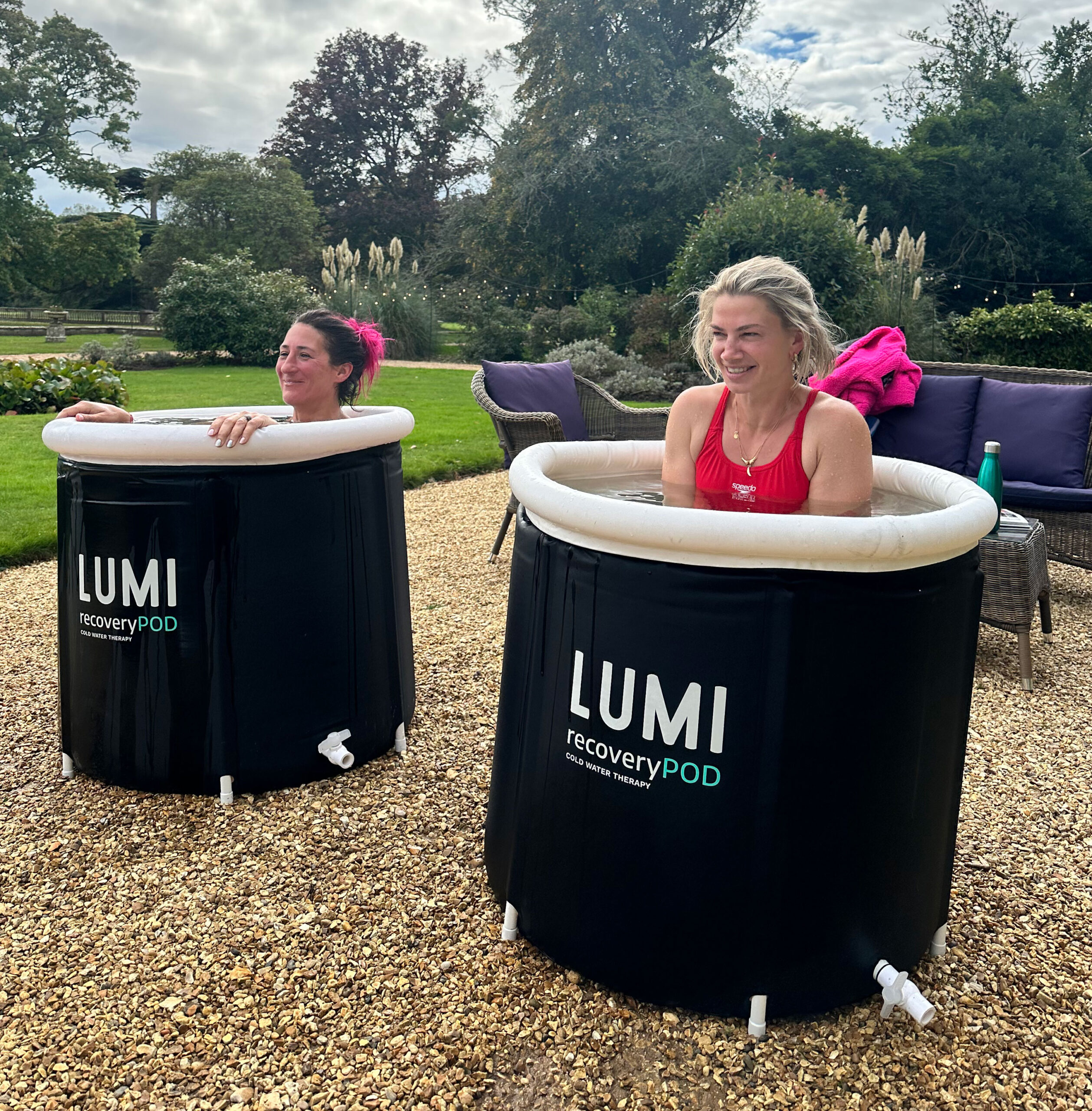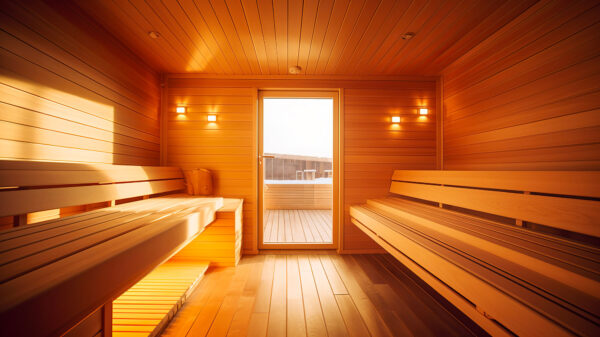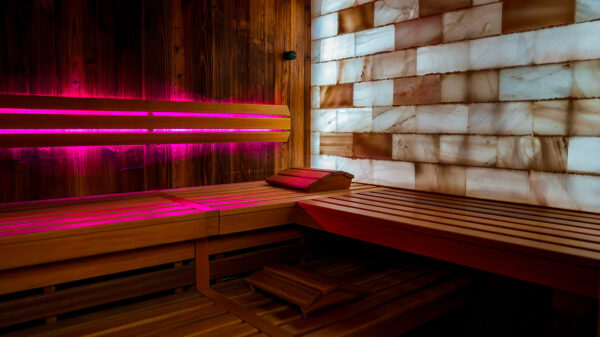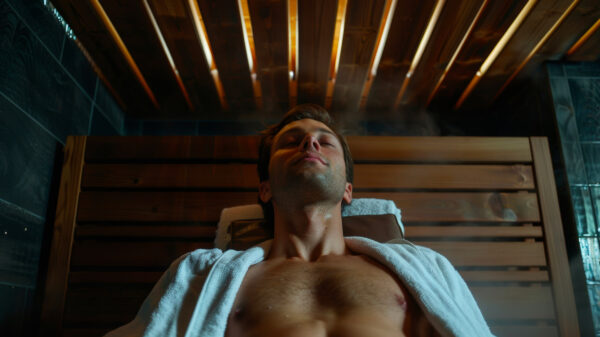Contrast therapy, the practice of alternating between hot and cold exposure, has been gaining popularity in wellness circles. This method is commonly integrated into sauna routines, with proponents claiming it offers a variety of physical and mental health benefits. If you’re a regular sauna-goer, you may already be familiar with the concept, but how does it work, and what are its advantages? In this article, we’ll delve into the science behind contrast therapy and why you should consider incorporating it into your sauna routine.
What is Contrast Therapy?
At its core, contrast therapy involves alternating between hot and cold environments. Typically, sauna enthusiasts first experience the heat of the sauna and then follow it up with a plunge into cold water (such as a cold plunge pool, ice bath, or a cold shower). The process is often repeated several times, with each cycle designed to shock the body and improve circulation.
While contrast therapy has been around for centuries, originating in Finnish saunas and Russian banyas, it’s only in recent years that the practice has become mainstream in the wellness community. People are now realising its potential for improving recovery, enhancing physical performance, and supporting mental well-being.
How Does Contrast Therapy Work?
The primary mechanism behind contrast therapy lies in the body’s response to extreme temperature changes. When exposed to heat, the blood vessels dilate, promoting increased circulation and the delivery of oxygen and nutrients to muscles. Conversely, cold exposure causes blood vessels to constrict, redirecting blood flow to vital organs.
By alternating between these two states, contrast therapy helps stimulate the circulatory system, boosting blood flow and aiding in muscle recovery. This process also promotes the removal of metabolic waste products, such as lactic acid, which can build up during intense physical activity.
The benefits of contrast therapy extend beyond just physical recovery. Exposure to both hot and cold temperatures has been shown to activate the body’s stress response, which, over time, can help the body adapt to stressors and improve resilience.

The Health Benefits of Contrast Therapy
-
Improved Circulation and Blood Flow
The alternating hot and cold temperatures cause the blood vessels to expand and contract, improving circulation throughout the body. Enhanced circulation helps to supply oxygen and nutrients to tissues more efficiently, supporting overall health and vitality. Better circulation can also reduce the risk of cardiovascular issues by lowering blood pressure and improving heart function.
-
Muscle Recovery and Reduced Soreness
For athletes and fitness enthusiasts, one of the key benefits of contrast therapy is muscle recovery. Heat helps relax muscles, reduce stiffness, and increase the range of motion, while cold therapy can reduce inflammation and numb pain. The combination of the two helps accelerate recovery, alleviate muscle soreness, and reduce the risk of injury after intense physical activity.
-
Enhanced Immune Function
Contrast therapy can have a positive effect on the immune system. Cold exposure, in particular, has been shown to stimulate the production of white blood cells, which play a crucial role in fighting off infections. Alternating between hot and cold temperatures may help strengthen the immune system, making you less susceptible to illness.
-
Stress Reduction and Mental Clarity
Sauna sessions, particularly when combined with cold exposure, can have a calming effect on the mind. The practice of switching between hot and cold environments stimulates the release of endorphins, which are natural mood boosters. Additionally, contrast therapy encourages mindfulness, helping participants focus on their breath and stay present during each phase of the process.
-
Detoxification
Sauna use induces sweating, which helps flush toxins from the body. When followed by cold exposure, this process is said to aid in the expulsion of waste products, leaving the body feeling rejuvenated. This is particularly beneficial for individuals looking to support their body’s natural detoxification processes.

How to Incorporate Contrast Therapy into Your Sauna Routine
If you’re new to contrast therapy, it’s essential to approach the practice gradually to allow your body time to adapt. Here’s a simple guide to getting started:
-
Start with a Sauna Session: Begin by spending 10 to 15 minutes in the sauna. The heat will help loosen up your muscles, relax your body, and get your circulation flowing.
-
Cold Exposure: After your sauna session, take a cold plunge or shower for 1 to 3 minutes. If you’re using a cold plunge pool, aim for a temperature of around 10–15°C. If you prefer a cold shower, make sure the water is chilly enough to create a noticeable contrast.
-
Repeat the Cycle: Alternate between hot and cold for 3 to 5 cycles. It’s important to listen to your body throughout the process. If you feel lightheaded or uncomfortable, take a break or stop the session.
-
Finish with Cold: It’s often recommended to finish your contrast therapy session with a final cold exposure. This helps close the pores and cool down the body, leaving you feeling refreshed and invigorated.
Precautions to Keep in Mind
While contrast therapy offers numerous benefits, it’s not suitable for everyone. If you have any cardiovascular conditions, respiratory issues, or are pregnant, it’s essential to consult with a healthcare professional before beginning contrast therapy. Additionally, always listen to your body and avoid overdoing it—extreme temperatures can put stress on the body, and it’s important to stay hydrated and take breaks as needed.
Conclusion
Contrast therapy, when combined with regular sauna use, can offer a wide range of health benefits, from improved circulation to enhanced muscle recovery and mental well-being. As a sauna enthusiast, adding cold exposure into your routine can help take your wellness journey to the next level. Whether you’re looking to accelerate recovery after a workout or reduce stress, contrast therapy is a time-tested practice with proven results.
Before incorporating contrast therapy into your sauna sessions, always be sure to listen to your body and consult a healthcare professional if you have any concerns. With the right approach, this invigorating therapy can help you feel better, recover faster, and improve your overall health.
Sources:
-
Baghery, S., & Maleki, B. (2020). “The Effects of Contrast Bath on Recovery from Delayed Onset Muscle Soreness in Athletes: A Systematic Review.” Journal of Exercise Rehabilitation, 16(5), 395-405.
-
Huttunen, P., et al. (2004). “Effect of sauna bathing on the cardiovascular system: a review.” Annals of Clinical Research, 36(1), 74-79.
-
Wilcock, I. M., et al. (2006). “The effect of contrast water therapy on recovery from exercise-induced muscle damage.” International Journal of Sports Physiology and Performance, 1(3), 162-171.
- Photo credit The Wild Life New Forest












